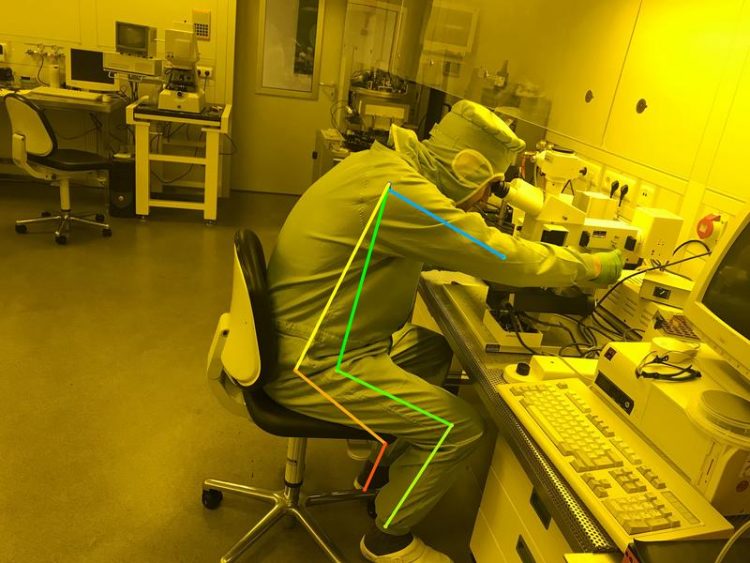Data-driven modeling and AI-based image processing to improve production

Recognition of the postures of humans using AI-based image analysis. (c) Fraunhofer FIT
Automation and the development of business processes require data that inform the optimization of processes or the development of innovations. At Hannover Messe 2019, Fraunhofer FIT will present a platform technology that integrates smart databases, specific analysis methods as well as networked sensors and measuring instruments.
Functionalities such as maintenance and operations are represented in the data models and may be enhanced to include predictive maintenance. This facilitates agile development of new services and business models and their flexible adaptation to rapidly changing customer needs.
“It is important to understand that – in contrast to traditional production and automation technologies with their highly customized but inflexible models – with data-driven models we're no longer looking for absolute results. The models take into account that data acquisition and data quality can be adapted to situational requirements, to be able to react more flexibly”, explains Prof. Dr. Harald Mathis, leader of the Biomolecular Optical Systems group at the Fraunhofer Institute for Applied Information Technology FIT, who also heads the SYMILA Fraunhofer Application Center at Hamm.
Another important component of our system is what we call Smart Data Exchange. It guarantees a maximum of data security and data integrity, e.g. if data must be transferred from one production site to another.
>>Recognition of the postures of humans in their work environment using AI-based image analysis
Our second exhibit is a smart video system to protect workers in hazardous work environments. The system is capable of detecting the basic anatomical structure of humans, i.e. head, rump, arms and legs, in a live video stream. The method used is called Realtime Pose Estimation. Based on the detected anatomical structures and their orientations, additional neural networks determine the postures of the detected figures, e.g. if a person is standing, sitting or lying on the floor in the area under surveillance.
Realtime Pose Estimation is an AI application. The algorithms broadly mimic neural processes in the brain, simulating a deep network of nerve cells. Analogous to the human model, these neurons learn from experience and training. We used the COCO dataset, which contains some 250,000 images of persons with their body parts identified and annotated, and several further datasets to train our system. It can now reliably identify body parts in unfamiliar scenes in live video streams.
Media Contact
More Information:
http://www.fit.fraunhofer.deAll latest news from the category: Trade Fair News
Newest articles

Skyrmions move at record speeds
… a step towards the computing of the future. An international research team led by scientists from the CNRS1 has discovered that the magnetic nanobubbles2 known as skyrmions can be…

A flexible and efficient DC power converter for sustainable-energy microgrids
A new DC-DC power converter is superior to previous designs and paves the way for more efficient, reliable and sustainable energy storage and conversion solutions. The Kobe University development can…

Technical Trials for Easing the (Cosmological) Tension
A new study sorts through models attempting to solve one of the major challenges of contemporary cosmic science, the measurement of its expansion. Thanks to the dizzying growth of cosmic…





















